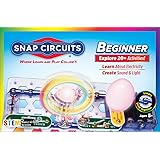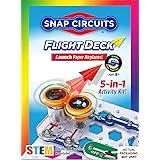Deliciously Smart DIY Food Hacks: Elevate Your Kitchen Game
Everyday cooking and meal preparation can often be riddled with small frustrations. Perhaps a favorite treat is found to be excessively expensive, or the simple act of pouring milk results in an unwelcome mess. Perhaps the texture of a healthy vegetable is not quite right, or the effort to prepare school lunches is undermined by crushed contents. These common kitchen dilemmas, however, do not need to detract from the joy of food. Instead, a world of ingenuity awaits, offering simple yet profoundly effective solutions to transform your culinary experiences.
As brilliantly demonstrated in the video above, a collection of creative DIY food hacks is available to tackle these very issues. From elevating mundane ingredients to streamlining meal prep and ensuring food stays intact, these clever kitchen tips are designed to save time, money, and sanity. Each hack offers a pathway to not only make cooking easier but also more enjoyable, ensuring that delicious and healthy meals are always within reach.
Transform Your Everyday Meals with Creative Food Hacks
The culinary journey is often enhanced by little touches and smart shortcuts. These food hacks are not merely about efficiency; they are also about infusing fun and flavor into daily routines, making them particularly engaging for families and students alike.
Sweet Treats and Delightful Desserts
-
Gourmet Vanilla Ice Cream: Why pay a premium for fancy ice cream when a budget-friendly vanilla tub can be effortlessly transformed? By crushing your favorite cookies, such as Oreos, and folding them into plain vanilla ice cream, an indulgent treat reminiscent of a high-end dessert is created. This simple technique allows for customization with various cookie types or other mix-ins like fruit pieces or chocolate chunks, significantly reducing cost while maximizing enjoyment.
-
DIY Yogurt Popsicles: For those moments when a refreshing, guilt-free dessert is desired, a simple cup of fruit yogurt can be converted into a homemade popsicle. A small slit is made in the lid, through which a popsicle stick is inserted, and the cup is then placed into the freezer for approximately an hour or two. This method provides a healthy and convenient alternative to store-bought ice cream, perfect for a quick snack or dessert.
-
Fun-Shaped Pancakes: Breakfast becomes an artistic endeavor when pancakes are crafted into exciting shapes. By utilizing large cookie molds placed in a pan with a bit of oil, pancake batter can be poured in to create hearts, stars, or other whimsical designs. This technique, while requiring some careful handling with a knife and spoon to release the pancake from the mold, ensures a delightful start to the day, especially for children.
-
Decorated Drinking Glasses: Elevate any beverage, from water to a party drink, by adorning the rim of the glass. Dipping the edge first into lemon juice and then into sprinkles or sugar instantly creates an aesthetically pleasing presentation. This hack is particularly effective for parties, adding a touch of elegance or playfulness to any gathering.
-
Raspberry Infused Ice Cubes: For an added burst of flavor and visual appeal, consider making fruit-infused ice cubes. A single raspberry, or indeed any small fruit, is placed into each compartment of an ice cube tray before being filled with water and frozen. Different colored fruits can be employed to create a vibrant assortment, enhancing not only the taste but also the appearance of drinks.
Mastering Fruit and Vegetable Preparation
Efficient and appealing preparation of fruits and vegetables can often encourage healthier eating habits and reduce food waste. These clever kitchen hacks illustrate how simple modifications can yield significant improvements.
-
Banana Messages: The Science of Oxidation: To create unique messages or drawings on a banana peel, a toothpick is utilized to make small, closely spaced holes. Initially, these marks are yellow, but within a minute, they transition to a distinct brown color. This transformation occurs due to the banana’s natural enzyme, polyphenol oxidase. When the peel is punctured, this enzyme is exposed to oxygen, initiating an oxidation reaction that results in the browning. It serves as a fascinating, edible science experiment, proving that the fruit inside remains perfectly intact and delicious.
-
Creative Fruit Shapes: Transform an ordinary fruit platter into an extraordinary display by using cookie cutters. Slices of fruits like kiwi, watermelon, or mango can be pressed with a cookie cutter to create stars, hearts, or other fun shapes. This method is ideal for garnishing cakes, cupcakes, or crafting an eye-catching fruit salad, making healthy eating more engaging, particularly for younger diners.
-
Massaging Kale for Tenderness: Kale, despite its nutritional benefits, can sometimes be stringy and tough. A simple yet effective technique to soften it involves a light massage with a small amount of oil. By scrunching and squeezing the kale leaves three or four times, the fibrous cell walls are broken down, resulting in a significantly softer, juicier, and more palatable texture. This process allows the kale to better absorb dressings, enhancing its overall flavor.
-
Effortless Tomato Halving: Slicing multiple small items like cherry tomatoes can be time-consuming. However, a clever plate-based method streamlines this task. A handful of tomatoes are placed on an inverted plate, and another plate is positioned on top, gently pressing down to secure them. A single horizontal swipe of a knife through the gap between the plates will cut all the tomatoes into perfect halves simultaneously, demonstrating remarkable efficiency.
-
Avocado Ripeness Check: The mystery of a perfectly ripe avocado can be solved by checking under its stem. If the area beneath the stem is dark and brown, it typically indicates that the avocado is past its prime and may be brown or slimy inside. Conversely, if the stem can be easily removed to reveal a bright green color underneath, the avocado is likely creamy and green, ready for immediate consumption. This simple visual cue prevents the disappointment of cutting into an overripe fruit.
-
Maximizing Lemon Juice Extraction: To yield the maximum amount of juice from a lemon, it should be rolled firmly on a counter before cutting. This action breaks down the internal membranes, making it easier to extract the liquid. For an even more ingenious solution, a sprayer attachment can be inserted directly into a lemon, allowing for a fine mist of fresh lemon juice to be applied to salads, fruits, or even infused into water. This lemon spray can be stored in the fridge for quite a few days, ensuring freshness and convenience.
-
Efficient Fruit Cutting Techniques: Precise and waste-free fruit preparation is achievable with specific tools and methods. Grapes can be halved efficiently using the two-plate method as described for tomatoes. Strawberries can be hulled by pushing a straw through the bottom, removing the green leaves and core with minimal fruit loss. Kiwi can be quickly prepared by cutting it in half and using a spoon to scoop out the flesh, avoiding messy knife peeling. For mangoes, cuts are made vertically and horizontally down to the peel on the fleshy sides, which are then pushed upwards from the center, revealing perfect cubes that can be easily sliced off.
Clever Kitchen and Lunchbox Solutions
Beyond individual ingredients, strategic approaches to food storage and handling can significantly enhance the daily kitchen routine, minimizing mess and maximizing enjoyment.
-
Mess-Free Pouring from Cartons: The frustrating tendency of milk or juice to splash when poured from a freshly opened carton can be avoided with a simple reversal. By turning the carton so the spout faces away from the glass, the liquid is poured “backwards.” This orientation allows air to enter the carton smoothly through the opening, preventing glugging and ensuring a clean, controlled pour.
-
Optimizing Your Stirring Technique: While circular stirring is common, a back-and-forth motion is often more effective for incorporating ingredients into drinks like tea or hot chocolate. This method facilitates quicker and more thorough mixing, ensuring flavors are evenly distributed.
-
Instant Burn Relief for the Tongue: For those moments when a hot beverage is consumed too quickly, causing a burnt tongue, a spoonful of sugar can offer immediate relief. Dipping the tongue in sugar is reported to soothe the pain, allowing for continued enjoyment of the drink.
-
Innovative School Lunch Storage: Protecting delicate items like bagels in a school backpack is a common challenge. An unconventional yet highly effective solution involves repurposing an old CD container. The cylindrical shape of a CD case is perfectly sized to hold a bagel, preventing it from being squashed and ensuring it remains intact until lunchtime. This creative reuse ensures that nutritious lunches, packed with fresh vegetables like tomatoes, lettuce, and avocado, remain appetizing and provide sustained energy for school activities.
Beyond the Basics: Understanding the Science Behind Your Hacks
A deeper appreciation for these kitchen hacks can be fostered by understanding the scientific principles that underpin them. This knowledge transforms simple tricks into insightful lessons in culinary science.
-
Oxidation in Bananas: The browning of banana messages, as previously discussed, is a clear example of enzymatic oxidation. Polyphenol oxidase, present in the banana peel cells, reacts with oxygen when the cell walls are damaged, forming new compounds that appear brown. This same process is responsible for the browning of apples and other fruits when exposed to air. Such reactions are fundamental to food chemistry and reveal how simple actions can accelerate natural processes.
-
Enzyme Activity in Kale: The massaging of kale fundamentally alters its texture by physically disrupting the rigid cell walls. This action releases enzymes that help break down complex carbohydrates and proteins, leading to a softer, less fibrous mouthfeel. Furthermore, the oil used in the massage helps to tenderize the leaves and allows for better absorption of dressings, enhancing flavor and digestibility.
-
Fluid Dynamics of Pouring: The mess-free pouring hack is a practical application of fluid dynamics and air pressure. When liquid is poured from a container, air must enter to replace the displaced volume. If the opening is obstructed by the outflowing liquid, a vacuum is created, leading to an irregular, glugging pour. By rotating the carton, a clear pathway for air is established, allowing for a smooth and continuous flow of liquid, which illustrates a simple principle of physics in action.
Maximizing Your Meal Prep and Enjoyment
These diverse DIY food hacks collectively offer a strategic approach to cooking and eating, providing benefits that extend beyond individual tasks.
-
Budget-Friendly Eating: Many of these hacks directly contribute to cost savings. Transforming inexpensive vanilla ice cream, making yogurt popsicles, and extending the life of lemons are all examples of how smart kitchen practices can reduce grocery bills without compromising on quality or enjoyment.
-
Healthy Choices Made Easy: By making fruits and vegetables more appealing and easier to prepare, these hacks encourage a greater intake of nutritious foods. From colorful fruit salads to massaged kale, the emphasis is often placed on fresh, wholesome ingredients.
-
Making Food Fun: Especially crucial for engaging children, hacks like fun-shaped pancakes, banana messages, and decorative fruit cuts transform meals into creative experiences. This playful approach can foster a positive relationship with food from a young age.
-
Time-Saving Techniques: Efficiency is a cornerstone of many of these hacks. The plate method for cutting tomatoes and grapes, quick kiwi and mango preparation, and mess-free pouring all contribute to streamlining kitchen tasks, freeing up valuable time.
Ultimately, these DIY food hacks are more than just simple tricks; they represent a philosophy of resourcefulness and creativity in the kitchen. By embracing these clever approaches, it is possible to transform everyday cooking challenges into opportunities for culinary innovation. The implementation of these smart food hacks can undeniably lead to a more enjoyable, efficient, and delicious dining experience for everyone.







